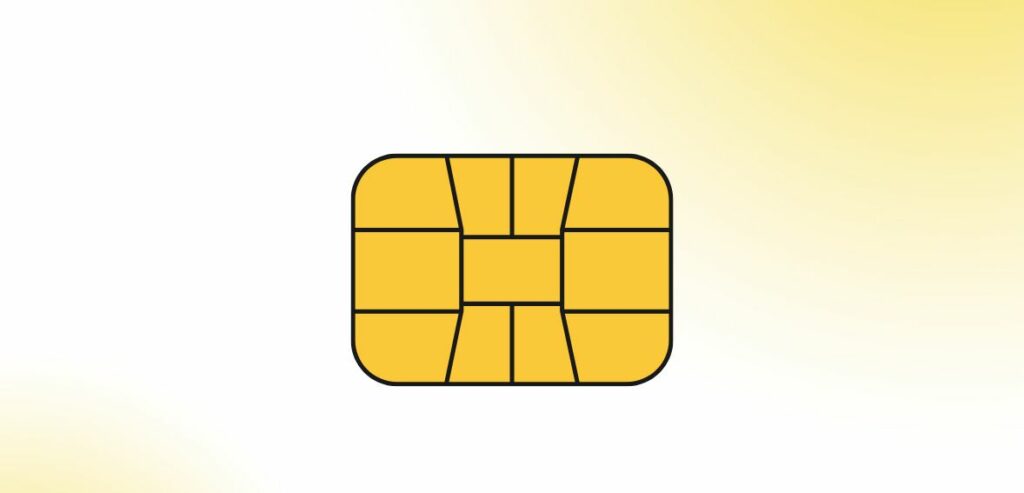What is an EMV credit card?
An EMV credit card has an intelligent chip feature. A card reader will review the chip on a card and confirm a transaction. The chip works like a magnetic stripe on an older card, but it has added security and fraud protection features.
Entire EMV credit card processing is secure and becoming popular quickly.
What does EMV mean?
EMV is short for Europay, MasterCard, and Visa. These three card entities got together to develop the EMV standard in the 1990s. The parties developed the standard to reduce the risk of fraud or data theft.
How does an EMV card work?

An EMV card works with a payment acceptance device supporting such cards. It uses a few steps:
- The customer will insert one’s EMV credit card into the reader. The chip must enter the inside part of the device.
- The card terminal will read the data on the chip. It authenticates the data to ensure it is not a counterfeit card.
- The issuing bank will confirm the data and create a transaction. The transaction will include details on the retail outlet and the money that goes forward.
- The card will be approved or declined. The answer depends on the line of credit and how much money is there.
- The transaction is finished, as the necessary data has moved over the network and is deemed safe.
The process takes an extra bit of time when compared with a magnetic stripe card, but it ensures accuracy. The card terminal will also list to the customer whether the card was accepted or declined.
What does the EMV chip feature?
The EMV chip on the card will feature small circuits bonded with a protective pad. The circuits include all the unique details surrounding the card. It is harder to copy or counterfeit the chip data than to do the same with a magstripe card.
The EMV chip also produces different codes for each transaction. This feature works differently from a magstripe card whose stripe never changes and is easy to duplicate.
How is the EMV card authenticated?
The payment terminal and card network will authenticate the card by reviewing the data in the chip. It will identify specific code details that are more thorough than what a magstripe card uses. The design reduces the risk of fraud.
Can a separate verification feature work?
Some EMV cards may support a secondary verification system to confirm the customer’s data. The customer might need to enter a PIN or provide a signature. Such secondary measures add protection and ensure a customer who physically acquires someone’s card cannot use it elsewhere. Not all payment terminals will support these additional security measures.
Customers can insert their EMV cards into terminal slots. But can they use other methods for processing their cards?
Some EMV cards support near-field communication or NFC systems. The customer can tap a card near a scanner that can read NFC data. The scanner will read the contents in the chip.
Some older cards use magnetic stripes, but they are not as prominent today. These stripes were in first-generation EMV cards to support the transition between card formats.

What happens if fraud occurs with an EMV card? Who is liable for the losses?
The issuing bank is responsible for the costs associated with the fraud. The terms will vary by card, but the issuing bank is typically responsible for the issue. However, retailers not meeting PCI compliance standards may also be liable for losses and legal actions. Businesses incapable of handling EMV-based transactions may also be liable for some losses.
I have a retail space, but my systems currently cannot support EMV cards. Can I still accept them?
Some EMV cards also feature magnetic stripes to make them work on old and new terminals alike. It is strongly recommended that you start investing in EMV technology to read future cards. More recent EMV cards are more likely to come with NFC features rather than magnetic stripes.
Can my business read EMV transactions while offline?
EMV cards can utilize a static data authentication process where a terminal will read info surrounding that card. Data is authenticated between the terminal and the card. The issuing bank doesn’t need to be contacted here. After you return online, you can send the payment information to the proper bank. The process ensures you can collect payments from anywhere, including places where online signals might not be easily accessible.
How can EMV cards work with PCI DSS standards?
EMV chips can work with PCI DSS standards to reduce the risk of fraud. However, while EMV chips help protect transaction data, businesses must manage PCI DSS rules themselves. Your business can protect customer data using proper data encryption standards when handling customer payment data. You could also store the data well and avoid reporting things like PIN and CVV values when recording data. You can contact a PCI compliance officer to help you review what you should do when meeting these rules.
Where are people using EMV cards?
EMV cards were first utilized in Europe. They have since expanded into many other countries, although less prominent in the United States. As of 2018, EMV cards have a 60 percent adoption rate in the United States. The total is less than the 80 percent rate found in Europe, Canada, and other places. EMV cards are expected to become more prominent as more people and businesses explore the benefits of these cards.
Will magnetic stripe cards become extinct?
Card companies are not obligated to stop producing magnetic stripe cards, but they may not be likely to create them soon. This makes it more essential for retailers to start focusing on accepting EMV cards. People will start to become used to these cards and will not use magnetic stripe ones as often as in the past.
What advantages does EMV offer?
The primary advantage of EMV is the decrease in card-present fraud stemming from counterfeit, lost, or stolen cards. EMV also enables compatibility with the worldwide payments network, allowing consumers with EMV chip cards to use them on any EMV-compatible payment terminal. Additionally, EMV technology facilitates improved cardholder verification methods.
How does EMV technology help in reducing identity theft?

EMV technology, with its computer chip authentication, plays a vital role in minimizing identity theft. Each transaction generates a unique identification through the chip, preventing identity thieves’ attempts to misuse card information for unauthorized purchases.
15. Are there differences in fraud liability between card-present and card-not-present transactions with EMV cards?
Absolutely, there are distinctions in fraud liability concerning EMV cards between card-not-present transactions and card-present.
In card-present transactions, the responsibility lies with the issuing bank rather than the merchant unless the merchant lacks EMV chip-compatible payment terminals. Conversely, in card-not-present transactions, the liability falls on the merchant.
16. What are the drawbacks of EMV cards?
While EMV cards are effective against fraud like skimming and duplicated magnetic stripes, they still face risks from PoS RAM Scraper malware. Although the card’s built-in security measures make transactions challenging for fraudsters without the card and PIN code, infected PoS machines can still extract some information from the card, posing a potential threat.
17. How does implementing EMV technology affect transaction speeds and customer experience at checkout?
Many new EMV cards and chip-based readers now include near-field communication (NFC) technology, enabling contactless payments. Instead of swiping their card at the terminal, customers can wave it near the reader, making transactions quicker and safer.
18. Is it beneficial for a small business to accept EMV payments?
Absolutely. Small businesses should seriously consider adopting EMV payments due to the heightened security they offer during transactions. EMV technology is instrumental in preventing fraud, and its widespread usage enables businesses to create a safer payment environment for their customers. By reducing the risk of certain liabilities and increasing customer trust, accepting EMV payments can benefit small businesses.
19. Do EMV transactions take longer than MSR card transactions?
The processing time for EMV transactions varies depending on how the issuer has personalized the card and how the merchant configures the terminal. Inefficient configuration can significantly increase transaction times, lasting several seconds.
Conversely, properly tuned cards and terminals only slightly increase transaction time, typically just a few seconds. However, the overall time spent in the transaction process may lengthen due to additional interactions the cardholder requires.
20. How does NFC mobile payment connect with EMV?
NFC-enabled mobile devices are poised for increased usage in contactless payments and other applications like loyalty programs and coupons. EMVCo is pivotal in shaping the architecture, specifications, requirements, and approval processes for facilitating EMV mobile contactless payments.
This initiative has been instrumental in introducing NFC mobile contactless payment systems in Europe, leveraging an EMV-based payments framework.
21. What information does the EMV chip store have?
The EMV chip on your card stores essential details, including your card number, expiration date, and a CVV code. This security code plays a crucial role in safeguarding against credit card fraud. Additionally, most EMV chip card products feature a magnetic stripe, serving as a backup for payment processors that have yet to adopt EMV technology.
22. Is it possible to track EMV chips?
While EMV chips enhance security and reduce fraud risks, they do not include GPS or tracking capabilities. Consequently, if your card is lost or stolen, the EMV chip won’t facilitate its tracking.
23. Can anyone duplicate the EMV chips?
No, EMV chips cannot be duplicated. When inserted into a terminal, the chip engages in a ten-step authentication process known as a “handshake.” This process ensures that both the terminal and the chip are EMV compliant. Through a series of cryptograms, the terminal validates the chip as EMV. Each time the card is inserted, a different set of cryptograms authenticates the terminal and chip, making duplication impossible.
24. Is EMV the same as RFID?
No, EMV and RFID (radio-frequency identification) are distinct technologies. While EMV necessitates a physical connection for payment, RFID utilizes radio waves to conduct transactions. However, some EMV transactions incorporate RFID technology, particularly contactless payments like mobile or tap-to-pay methods.
25. What changes does EMV bring for merchants?
Several aspects of the payment process transform when transitioning from magnetic stripe to EMV transactions:
- The transaction flow shifts due to the implementation of dynamic card authentication.
- Merchants need an EMV-capable terminal equipped with an EMV reader to support dynamic authentication. During the transition, they may also accommodate contactless transaction devices.
- The card must remain in contact with the chip reader throughout the transaction.
- The introduction of dynamic authentication necessitates new message requirements, including data elements carrying EMV information.
26. Are there any specific requirements for businesses transitioning to EMV technology?
Businesses transitioning to EMV technology must ensure their payment terminals are EMV-compliant. Additionally, staff may need training on how to process EMV transactions effectively. It’s also crucial for businesses to communicate the changes to their customers to avoid confusion during the transition period.
27. Can EMV cards be used for online purchases?
Yes, EMV cards can be used for online purchases. While EMV technology primarily focuses on securing in-person transactions, many EMV cards also have a card verification code (CVC) or card verification value (CVV) printed on the card, which can be used as an additional layer of security for online transactions.

